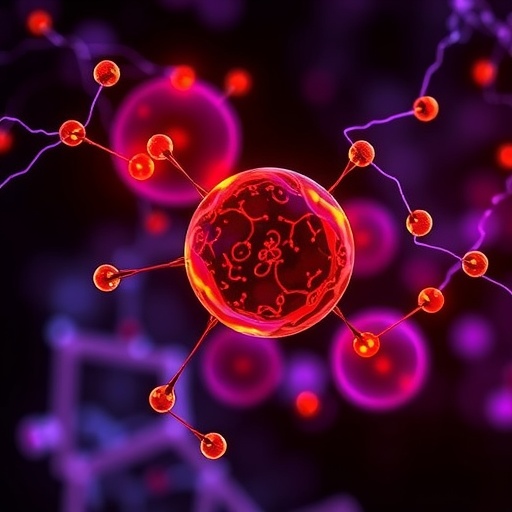Bose-Einstein condensates – often called the "fifth state of matter", the other four states being solids, liquids, gases and plasmas – are obtained when atoms are cooled almost to absolute zero. Under these conditions, the particles no longer have free energy to move relative to each other, and some of these particles, called bosons, fall into the same quantum states and cannot be distinguished from one another. At this point, the atoms start obeying what are known as Bose-Einstein statistics, which are usually applied to identical particles. In a Bose-Einstein condensate, the entire group of atoms behaves as though it were a single atom.
Bose-Einstein condensates were first predicted and theoretically calculated by Satyendra Nath Bose (1894-1974) and Albert Einstein (1879-1955) in 1924, but it was not until 1995 that Eric A. Cornell, Carl E. Wieman and Wolfgang Ketterle managed to produce one using ultracold rubidium gas, for which all three were awarded the 2001 Nobel Prize in Physics.
Research by an international collaboration recently produced the equivalent of a Bose-Einstein condensate using the chemical compound nickel chloride. More importantly, theoretical treatment of the data enabled the researchers to obtain a set of equations that can be applied to other materials that are not characterized as Bose-Einstein condensates.
Armando Paduan Filho, Full Professor at the University of São Paulo's Physics Institute (IF-USP) in Brazil, participated in the study. "At temperatures close to absolute zero and in the presence of a very intense magnetic field, nickel chloride behaves like a Bose-Einstein condensate, so that the properties of a large group of atoms can be described using a single equation, a single wave function," Paduan Filho told.
This discovery makes calculations possible that would otherwise be impracticable. For example, the magnetic moment of a macroscopic body can theoretically be calculated as the sum of the magnetic moments of its atoms, but in practice, this calculation is not feasible because of the huge numbers of atoms and interactions involved. "One way to solve the problem is to use the statistics of quantum mechanics. In this case, we have to think of atoms not as points or solids but as waves," Paduan Filho said.
In bosons, i.e., in materials that obey Bose-Einstein statistics, all waves associated with the particles of which they supposedly consist are equal. Meanwhile, the lower the temperature of a material, the longer the wavelengths of its constituent particles, and as the temperature of the material approaches absolute zero, the wavelengths increase until all of the waves overlap. "So we have a situation where all the waves are equal and overlapping, and we can therefore represent all of them as a single wave. Energy emissions and electrical, magnetic, thermal, luminous and other properties can be calculated by means of a single wave function," he explained.
When the researchers studied nickel chloride, they found that when the material was cooled almost to absolute zero and subjected to a strong magnetic field, its atoms behaved like bosons and it could therefore be characterized as a Bose-Einstein condensate. "The fact that the atoms can be perceived as waves is an experimental finding that corroborates the theory, whereas saying that they form a Bose-Einstein condensate comes from applying a theoretical instrument to explain the properties observed," he said.
Physicists at the University of São Paulo (USP) have been investigating the magnetic properties of nickel chloride for more than a decade. "In some materials, the magnetic moments of the atoms are disorderly at room temperature but orderly when the material is chilled. We discovered that this orderliness doesn't happen in nickel chloride, but at very low temperatures and in the presence of a high magnetic field, it exhibits an induced magnetic moment," Paduan Filho said.
The investigation proceeded through collaboration with several foreign institutions, such as the National High Magnetic Field Laboratory (NHMFL) in Los Alamos, USA, and the similarly named French facility in Grenoble (LNCMI), among others. These partnerships enabled the researchers to reach temperatures in the order of 1 millikelvin – one-thousandth of a degree above absolute zero – and to use techniques such as nuclear magnetic resonance (NMR) to study matter at the atomic and subatomic scales. This is how the researchers succeeded in characterizing ultracold nickel chloride as a Bose-Einstein condensate.
"Besides these experiments, our collaboration also produced consistent theoretical work, and we arrived at a set of equations that, with some transpositions, can be applied to other materials apart from condensates," Paduan Filho said. The use of these equations offers excellent prospects not only for basic research into the structure of matter but also for future technological applications, since a great many everyday devices operate on the basis of magnetic properties.
###
Media Contact
Samuel Antenor
[email protected]
55-113-838-4381
@AgencyFAPESP
http://www.fapesp.br
############
Story Source: Materials provided by Scienmag




